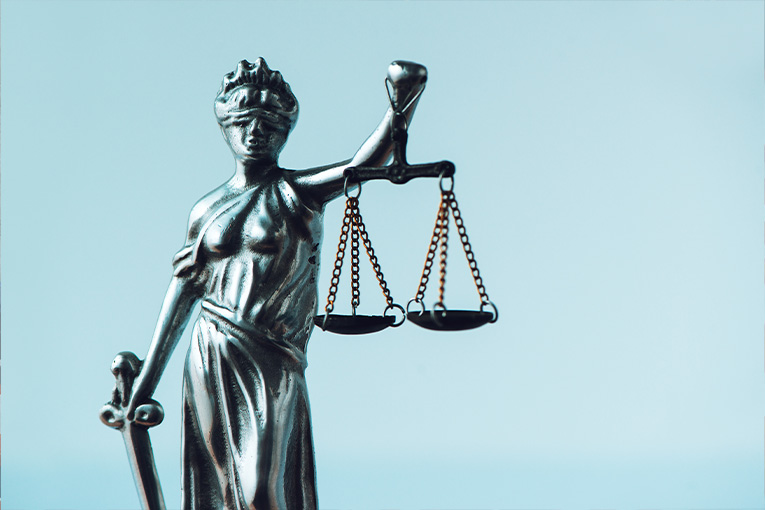Introduction
Civil litigation refers to the process of resolving legal disputes between two or more parties through the court system. When civil cases are filed, the plaintiffs allege that their rights have been violated in some way and seek compensation or other remedies through the courts. Civil litigation is an important part of the legal system, yet the complexities of the civil litigation process can seem daunting to those unfamiliar with the procedures and terminology involved.
This article provides a comprehensive overview of the key steps and phases in the civil litigation system, from the initial filing of a case through trial and any appeals. Whether you are considering filing a civil lawsuit, have been served with a complaint, or simply want to understand the civil litigation timeline better, this guide will help demystify the litigation process. Gain insight into civil litigation court rules, strategic preparation, building a strong case, and available routes to resolving disputes outside of trial.
Understanding Civil Litigation
Civil litigation involves legal disputes between private parties, as opposed to cases where the government is a party. These cases can involve anything from personal injury and medical malpractice to divorce and contractual breaches. The person who initiates a civil lawsuit is called the plaintiff, while the person or entity being sued is known as the defendant. Attorneys who specialize in civil litigation represent both the plaintiff and defendant.
Common types of civil cases include:
- Contract disputes: allegations of breach of contract or disputes over contract terms
- Personal injury: claims of harm caused by another party’s negligence
- Medical malpractice: allegations of professional negligence by doctors or other medical providers
- Product liability: claims of injury or damage caused by defective products
- Real estate: disputes over property and land rights issues
Key terms in the civil litigation process include:
- Complaint: an initial document filed by the plaintiff stating claims against the defendant
- Discovery: pretrial information gathering by both parties
- Depositions: out-of-court testimony given under oath
- Motion: a request made by a party asking the court to make a decision or take action
- Trial: a court proceeding where case facts and evidence are presented
Civil litigation attorneys handle tasks like drafting pleadings, arguing motions, taking depositions, preparing witnesses, and presenting cases in court. Paralegals often play a vital support role in legal research, organization, and case preparation.
Preparing for Civil Litigation
The first major step for a plaintiff is evaluating whether there are valid grounds for a lawsuit and performing an initial investigation to determine if the civil litigation process is worth pursuing. This involves assessing elements like:
- Applicable law: Do laws or statutes support the alleged claims?
- Evidence: Is there sufficient evidence available to prove the case?
- Type of damage: What specific harms or losses resulted from the issue?
- Ability to collect: Does the defendant have assets to pay a judgment if the plaintiff prevails?
Once a plaintiff decides to proceed with a civil lawsuit, the complaint is drafted, stating factual allegations and legal claims against the defendant. The complaint must follow the civil litigation court rules of the specific jurisdiction where it is filed.
Civil litigation attorneys send a summons with the complaint, instructing the defendant when and how to respond. The defendant then has a set timeframe to submit an answer responding to the complaint’s allegations.
A vital part of building a winning case is conducting discovery, which includes depositions, interrogatories (written questions), requests for document production, and requests for admissions. Discovery enables parties to obtain information from each other and witnesses in preparation for trial.
Key strategies for plaintiffs in civil litigation cases include:
- Thoroughly investigating claims and gathering supporting evidence
- Identifying all parties that may share liability
- Hiring experienced litigation counsel to represent your interests
- Cooperating fully during the discovery process
- Considering alternatives like settlement or mediation before trial
The Civil Trial
If a civil lawsuit is not resolved or dismissed during pretrial proceedings, it will proceed to a trial before a judge or jury. The plaintiff bears the burden of proof and must demonstrate that the preponderance of evidence favors their version of the facts.
Meticulous preparation is critical for plaintiffs to present a clear, compelling case through witness testimony and documentation. Experienced civil litigation attorneys adeptly introduce evidence and make objections during trial.
In jury trials, jurors listen to the evidence and arguments before deliberating and reaching a verdict. The judge determines matters of law and provides jury instructions. In bench trials, the judge takes the place of the jury by hearing the case and rendering a verdict.
Steps in a full civil trial may include:
- Opening statements: outline of the case each side will present
- Plaintiff’s case: plaintiff calls witnesses and presents evidence
- Defendant’s case: defense cross-examines plaintiff’s witnesses and presents its own
- Rebuttal: The plaintiff challenges defense evidence if allowed.
- Closing arguments: both sides argue the strengths of their cases.
- Jury instruction: the judge explains the law jurors must apply.
- Jury deliberation: jurors discuss the case and render a verdict.
Skillful cross-examination of opposition witnesses can uncover contradictions or credibility issues that undermine their testimony. Closing arguments give attorneys a final chance to persuade the jury before they deliberate.
Alternative Dispute Resolution
Litigation is time-consuming and expensive, so some civil cases get resolved through alternative dispute resolution (ADR) techniques like mediation or arbitration. ADR aims to reach settlement agreements without a full trial.
In mediation, a neutral third-party mediator facilitates negotiations between parties to find common ground. The mediator has no power to impose outcomes. Mediation offers a confidential forum to potentially reach a settlement faster and preserve goodwill. However, it requires plaintiffs to temper expectations about damages.
Arbitration involves presenting evidence to an arbitrator or panel, who then issues a binding decision. Arbitration follows less formal procedures than litigation, and arbitrator decisions are rarely overturned. However, plaintiffs give up the right to a jury trial, and grounds for appeal are limited.
ADR holds advantages like saving time and costs, providing more control over outcomes than court rulings, avoiding the publicity of a trial, and giving flexibility in solutions. Disadvantages may include less formality benefiting the plaintiff’s case, limited appeal options, and less discovery power to obtain evidence.
Settlement Negotiation
Many civil suits end in negotiated settlements between parties rather than going to trial. Settlement can provide benefits like faster closure, reduced expenses, and more control over case outcomes.
Effective settlement negotiation requires understanding the motivations and priorities of both sides. Skilled civil litigation attorneys can advise clients on reasonable settlement ranges based on case specifics and help negotiate favorable terms. Factors like the strength of evidence on both sides, litigation costs, and the risks of going to trial impact negotiations.
Plaintiffs should consider points like:
- Current costs vs. expected costs through trials
- Strengths and weaknesses of evidence and witnesses
- Likelihood of collecting damages from defendant assets
- Potential alternative remedies through settlement
Reaching a viable settlement requires strategic thinking, realistic expectations, and the ability to compromise while still protecting core interests. Once a settlement is reached, the agreement should be meticulously documented and enforceable.
Post-Trial Proceedings
If no settlement is reached, the litigation process continues after trial. The party that loses at trial may file post-trial motions with the court seeking to challenge the verdict or request a new trial. If motions fail, the losing party can then file an appeal to contest the judgment with a higher court.
If the plaintiff wins at trial, the court enters a judgment outlining the remedies or damages the defendant must provide. However, collecting monetary damages from the defendant can present challenges in some cases. Plaintiffs may need to rely on enforcement mechanisms like garnishment of wages or liens on property. In cases of non-monetary remedies like injunctions, ensuring compliance also takes diligence.
Conclusion
This guide provides an overview of the major phases and procedures involved in civil litigation, from initial case assessment through trial and enforcement of judgments. The civil litigation process has many complexities to navigate for any party involved. Having strong legal guidance and representation experienced in civil law is invaluable for plaintiffs seeking just compensation or other remedies through the court system.
While daunting, understanding the key fundamentals equips plaintiffs with the knowledge to make informed decisions on resolving disputes through settlement or trial. For parties served with a civil complaint, learning litigation defense basics like promptly retaining counsel and responding skillfully during discovery is critical. Though every case has unique facets, the information covered here aims to make the civil litigation system and timeline more accessible.
FAQs
Civil litigation is the legal process in which two parties, usually individuals or organizations, resolve a legal dispute through the court system.
There are many different types of civil litigation, including personal injury cases, contract disputes, employment disputes, family law matters, and medical malpractice cases.
A litigator is an attorney who specializes in representing clients in civil litigation cases. They handle all aspects of the legal process, including pre-trial preparation, negotiation, and representing clients in court.
The pre-trial phase is the period of time before a civil case goes to trial. It involves gathering evidence, conducting discovery, and attempting to reach a settlement or agreement outside of court.
A civil litigation attorney represents clients in legal disputes and helps navigate the complex civil litigation process. They provide legal advice, prepare legal documents, and advocate for their clients in court.
The plaintiff is the party who initiates a lawsuit in civil court. They are seeking a legal remedy, such as monetary damages or an injunction, against the defendant.
Civil law refers to the body of law that governs legal disputes between individuals or organizations, as opposed to criminal law, which deals with offenses against society.
Some common types of civil litigation include personal injury cases, breach of contract disputes, divorce and family law matters, employment disputes, and medical malpractice cases.
The clerk of court is responsible for maintaining the court’s records, issuing court documents, and managing administrative tasks related to civil litigation cases.
If the parties in a civil litigation case cannot reach an agreement, the case may proceed to trial. A judge or jury will then make a decision based on the evidence presented.





